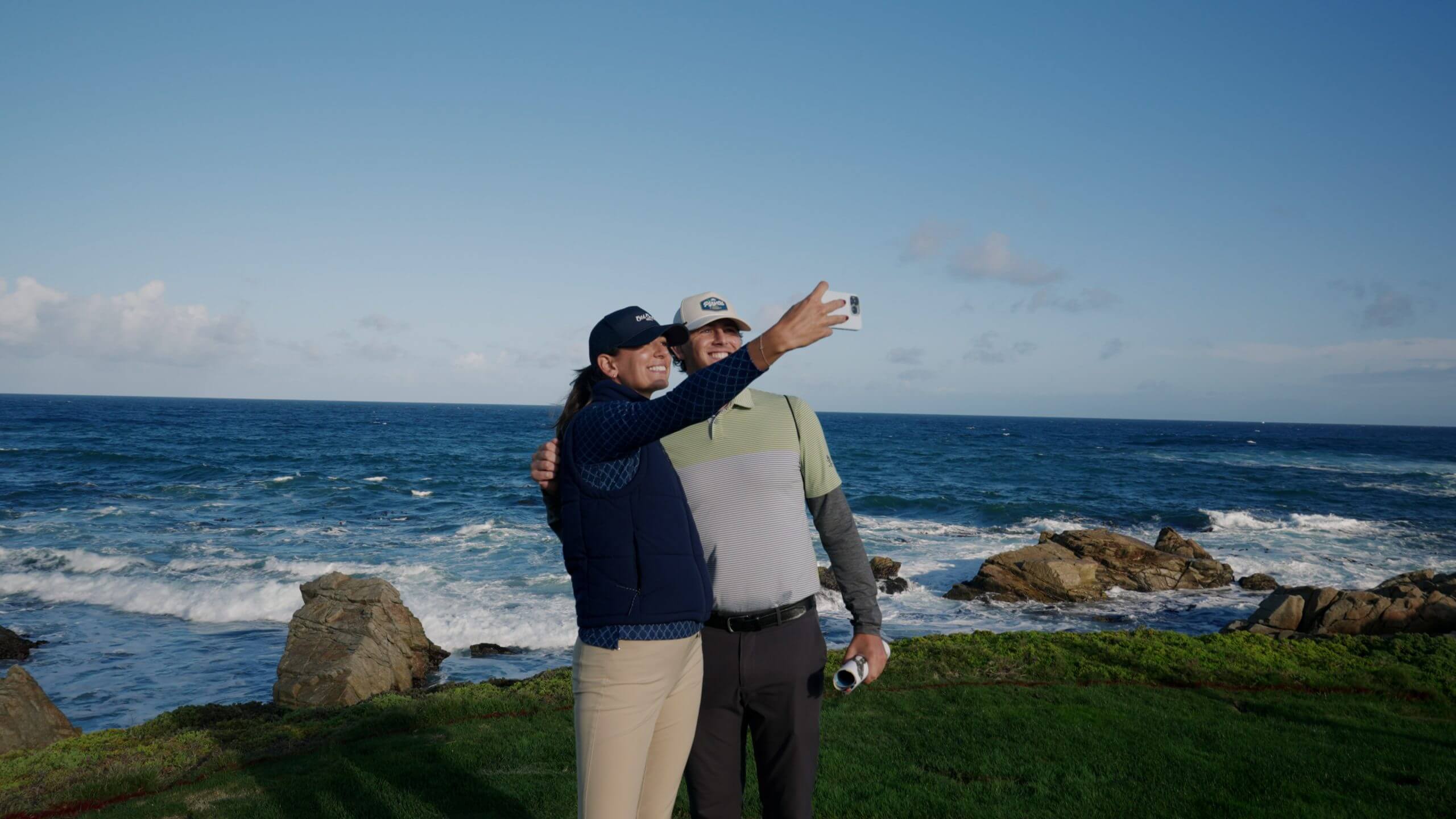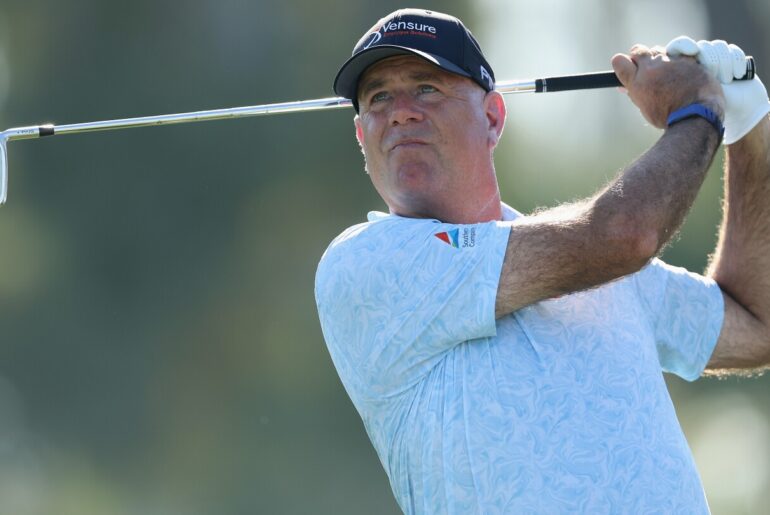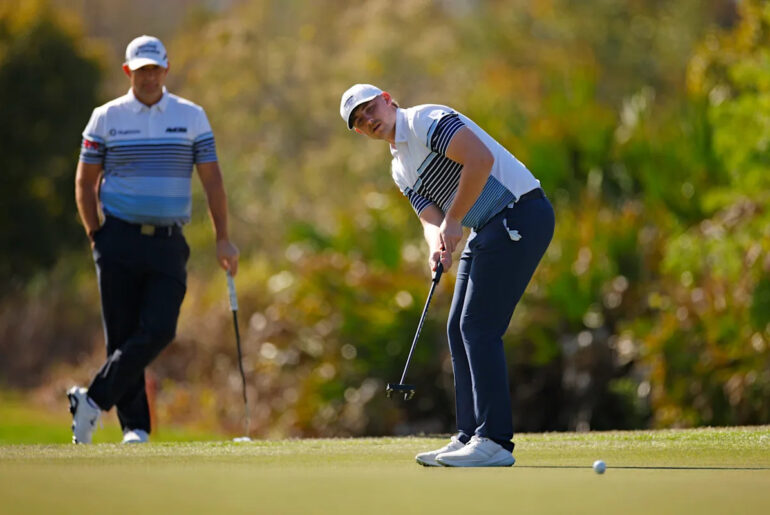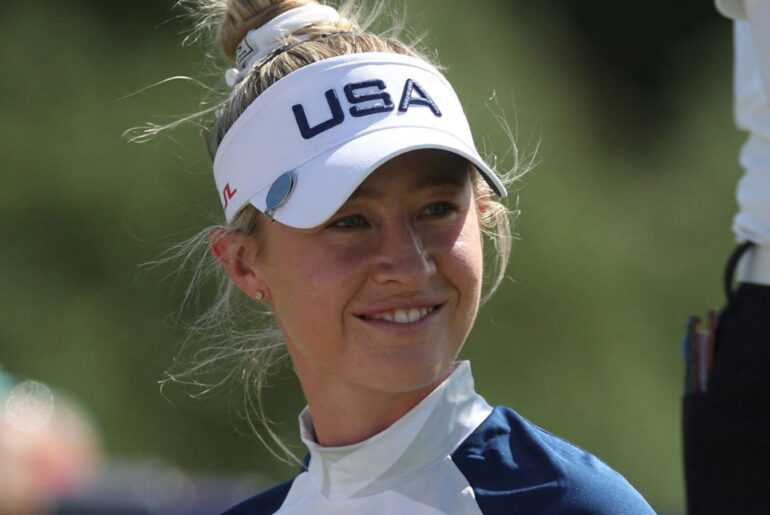Editor’s note: This story is part of Peak, The Athletic’s desk covering leadership, personal development and performance through the lens of sports. Follow Peak here.
Three swings. Three whiffs. My club kept cutting through the kikuyu grass but completely missing the ball, the impossibly thick rough gobbling up more and more of it with each attempt.
My stance more closely resembled that of a Little Leaguer hitting off a tee. My Titleist ProV1x was waist-high on a treacherous side-hill lie. I increasingly believed the task in front of me was not physically possible.
So after a third futile attempt, I decided it was time to take an unplayable drop. I was now hitting my seventh shot, and I still had 140 yards into Monterey Peninsula Country Club’s 18th green. Barbara, our walking scorer, kept the tally.
This is the start of the nightmare scenario that led me, a 26-year-old former Division III golfer turned professional golf writer for The Athletic, to make a 12 on a hole — a septuple bogey — during the U.S. Women’s Mid-Amateur. It was the most prestigious golf tournament I have ever qualified for: The winner of the tournament gets invited to compete in the U.S. Women’s Open.
The experience enlightened me just as much as it mortified me.
I’ll spare you some of the details, but from the moment I walked backwards about 50 yards to take my elected drop, I could no longer feel my arms. So naturally, hitting my seventh shot from the fairway sparked a spiral. I found yet another horrific lie right beneath the back lip of a greenside bunker, took a couple of unsuccessful blasts from the sand, and eventually two-putted from 35 feet for a 12. (Honestly, it was a great two-putt.)
I’ve never made a higher score on one hole in my competitive golf career.
I walked toward Barbara and attempted a smile: “You got all that?” She met me with a nod and some kind words, or perhaps condolences, and then I rushed up to the next tee, feeling the stares of the group behind us in the fairway with each step. I now had 29 holes left to soak up all that came with this experience. Because who knows if or when I’ll make it back.
At the start of this year, I told myself I wanted to sign up for a qualifier for the U.S. Women’s Mid-Am, a USGA championship for female amateur golfers aged 25 and above. I threw myself into the fire by playing my local 18-hole qualifying event in Alpine, N.J. I hadn’t competed in a real stroke-play tournament since my sophomore spring at Pomona College, before my collegiate career fell victim to the pandemic shutdown. Intermittent appearances in my club championship and interclub competition over the last four years didn’t count. This was a totally different animal.
There were 29 different qualifying sites around the country, but only five tickets to the Mid-Am were up for grabs in New Jersey. Thirty women teed it up. I survived a bogey-bogey-bogey start, and then summoned some of my best golf in years. I shot an even-par 72 in the pouring rain, earning co-medalist honors. Walking off the last, I looked at my caddie (my dad) and widened my eyes. Did I actually do it? An hour or so later it became official. I made my first national championship — at arguably one of the most beautiful golf courses in the country, The Dunes Course at Monterey Peninsula.
The hard part was over. Or was it?
The U.S. Women’s Mid-Am consists of a 132-player field. After two days of stroke play, there’s a cut. Only the top 64 advance to a match-play bracket. Six rounds of head-to-head matches determine the winner. I flew out to California three days after the final round of the Ryder Cup. I played two practice rounds, and then, spoiler alert: I did not make the cut.
Everything about the tournament set-up at Monterey Peninsula impressed — the environment was simply elite. That also meant triggers were everywhere.
For a novice member of the field, the coolest details of the event doubled as booby traps. The “Herzig” nameplate on the driving range. The roped-off putting green for players and caddies only. The table of senior amateurs I sat with at the welcome dinner — each of them with dozens of USGA championship appearances to their names. And made-to-order smoothies in the player hospitality lounge?
Seriously, who do they think I am?

The Athletic’s Gabby Herzig tried to soak in the experience at the U.S. Women’s Mid-Amateur in California with her caddie and brother, David. (Photo courtesy of the USGA)
With the way the course twisted throughout the oceanside property, players were sent off Nos. 1 and 12 tees during the first two rounds of play. Making it to that 12th tee required a three-minute shuttle ride, but the USGA recommended players catch a van 20 minutes early, so they could arrive with a few minutes of buffer. On Day 1 of the tournament, my caddie (this time my brother, David) and I accidentally walked up to the shuttle location about 18 minutes before our scheduled tee time.
We were immediately met with a throng of volunteers waving their hands in distress: “We need an emergency shuttle! Get the emergency van!” I made my tee time with about 12 minutes to spare. If you let it, tournament golf can turn into one giant ball of panic.
I knew perfectly well that I had absolutely nothing to lose by playing in this event. I purposely kept my goals intangible and directed more of my focus on properly embracing the rare experience. But regardless, I put myself in the arena — under the lights — for the first time in a long time. As a writer, I’m accustomed to walking inside the ropes. But playing inside the ropes, with the requirement of posting a score? That’s a scary place. My own expectations were on the line, in addition to those of my friends, family and peers.
In the grand scheme of things, this was not a life-or-death situation. It was a couple of rounds of golf. A stunning stroll next to the Pacific Ocean with my younger brother on my bag for the first time. Enjoy the walk, they say.
Yeah. Try telling that to my numb body two hours before my 7:48 a.m. Saturday tee time. Try explaining that to my throat, which nearly closed up after I sunk that six-foot putt for a 12. Try offering up some consolation to my brain after I hit a cold shank on my fifth hole on Sunday and battled anti-hosel rocket thoughts for the remaining 13 holes.
If that’s the way I felt during the U.S. Women’s Mid-Amateur, imagine Rory McIlroy from someone’s front lawn on No. 10 at Augusta in 2011, or any of his near-disasters during this year’s Masters. Think about those players fighting for their livelihoods at Q-School finals, or the PGA Tour’s Monday qualifiers.
We’ll never fully appreciate the extreme concentration and mental fortitude it takes to not only play elite golf, but to put your ego on the chopping block. What I experienced this weekend at the U.S. Women’s Mid-Am will never compare to what the faces of our sport battle weekly. But I did get a hint of it, and my two-day stroke play journey only emphasized what makes this game so great. It tests every facet of your being, from your self-confidence to your physical stamina.
The whole atmosphere, the borderline evil USGA pin locations — tournament golf exposes your weaknesses and projects them for everyone to see. Staying in the present, knowing how slim the margin is between success and failure is a rare skill. Don’t take it for granted next time you turn on the TV to Scottie Scheffler winning his umpteenth event of the year. After my double-digit score became the start of every conversation I had for the rest of my Saturday, I know that I won’t.
Immediately following my 12, I somehow calmed my heart rate and made three consecutive pars. I woke up the next day knowing that now I really had nothing to lose, but I still wanted to redeem myself. I approached the day with a blank slate, and despite my fifth-hole shank, I finished by shooting 1-over-par on the back nine.
I don’t really know how I did it, but acknowledging my blunders and anxious thoughts rather than suppressing them seemed to help me move on — even in the middle of the round. That’s a sports-psychologist-approved method that I’ve written about before.
I posted scores of 88-79, beat approximately 10 players, and walked off my 36th hole feeling like a very large weight had been lifted off my shoulders.
But somehow, I’m already looking forward to next year’s qualifier, and subjecting myself to the torture all over again.







